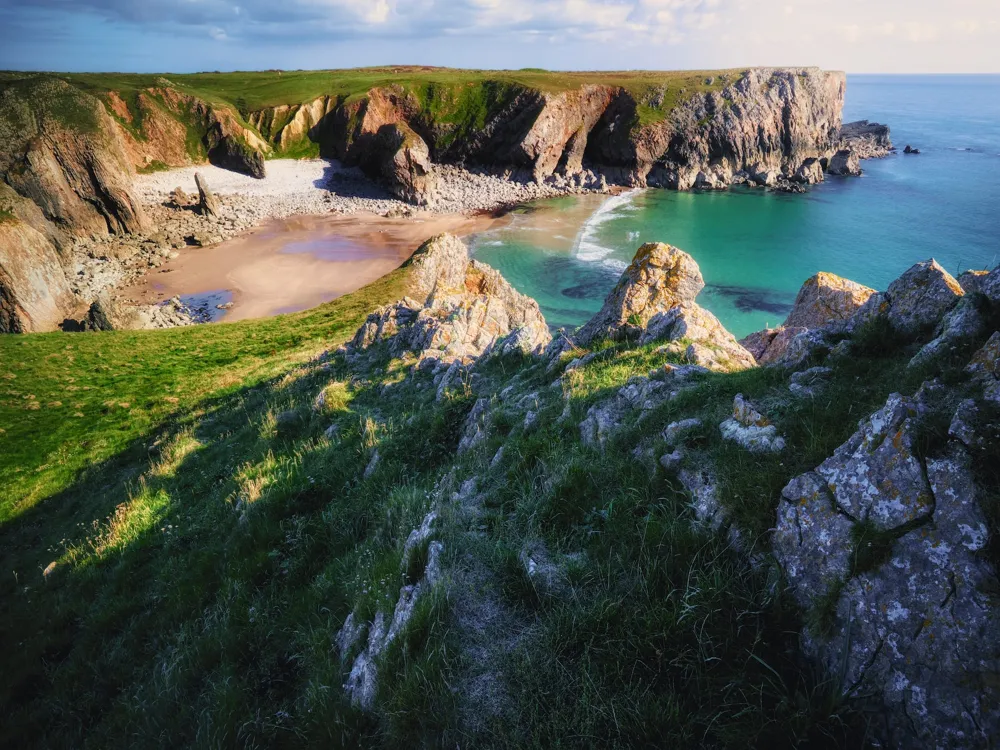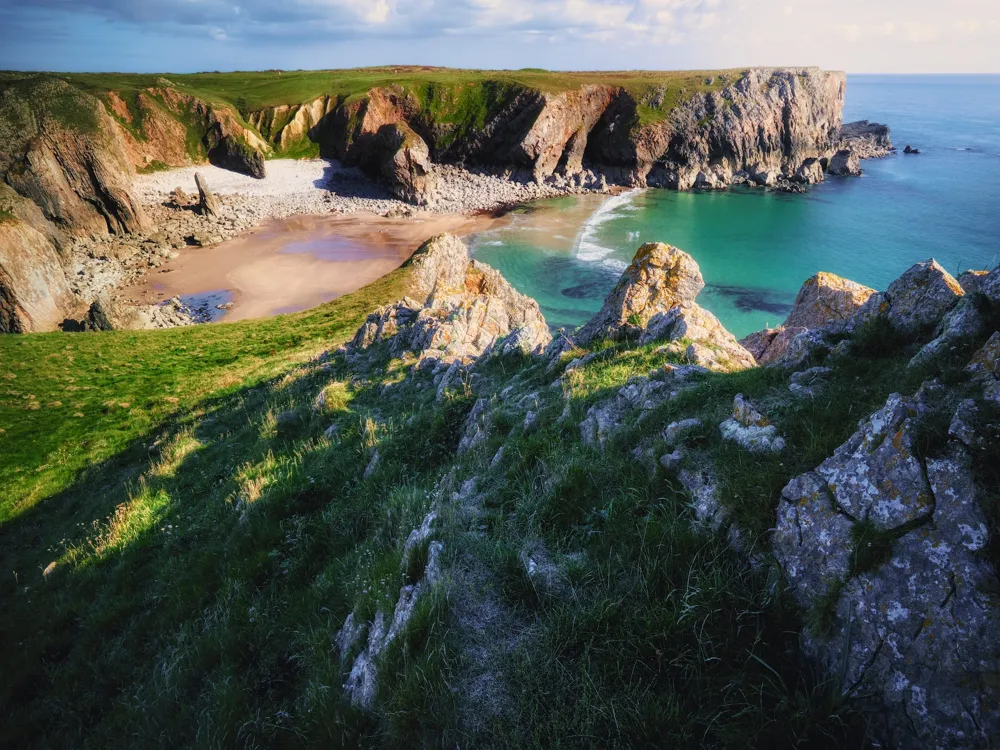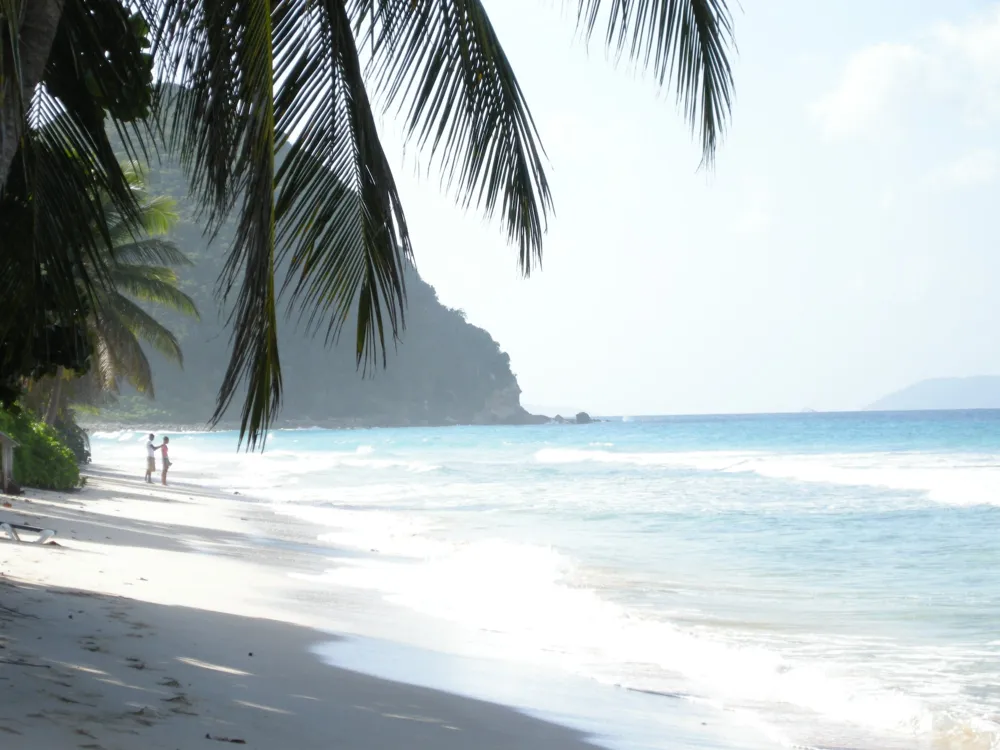Halong Bay, a UNESCO World Heritage site since 1994, is one of Vietnam's most stunning and popular tourist destinations. Located in the Gulf of Tonkin, it spans an area of around 1,553 square kilometers and is famed for its emerald waters and thousands of towering limestone islands topped with rainforests. Halong Bay's name, which means 'Descending Dragon', stems from local legend and adds a mystical layer to its natural beauty.
Visitors to Halong Bay are captivated by its breathtaking landscapes, which are characterized by dense clusters of limestone monoliths, some as high as 100 meters, and numerous caves and grottoes created by millions of years of erosion. The bay's geo-diversity includes a variety of ecosystems, including coral reefs, freshwater swamp forests, dense mangrove forests, and small freshwater lakes on some of the larger islands. This rich natural diversity is home to a variety of species, including several endemic species.
Besides its geological and biological significance, Halong Bay also has a rich cultural history. Archaeological studies show that humans have inhabited the area for tens of thousands of years, with several historical and cultural relics found in caves and grottoes around the bay. The local floating villages are unique, showcasing the traditional lifestyle of the fishermen who have lived in the bay for centuries.
Tourism in Halong Bay offers a wide range of activities including boat tours, kayaking, scuba diving, rock climbing, and hiking. The bay's beauty is best experienced on a cruise, offering a serene way to view the towering limestone karsts and visit some of the bay's hidden gems, like its beautiful caves and secluded beaches. Halong Bay's ethereal beauty, cultural richness, and diverse range of activities make it a must-visit destination for travelers from around the world.
The architecture in and around Halong Bay is a harmonious blend of traditional Vietnamese styles and influences from various historical periods, reflecting the region's rich cultural heritage. The area's architecture is not just about the buildings but also includes the layout and design of the floating villages, the construction of traditional boats, and the design of modern facilities that blend seamlessly with the natural landscape.
One of the key architectural elements in Halong Bay is the use of wood and other natural materials, which is evident in the design of the boats and ships used for cruising around the bay. These traditional wooden junks are a reflection of Vietnam's ancient shipbuilding industry and are an iconic symbol of Halong Bay. The boats, often adorned with intricate carvings, feature sails and are designed to navigate the calm waters of the bay efficiently.
The floating villages of Halong Bay are another unique architectural aspect. These villages, such as Cua Van and Vung Vieng, are built on floating platforms and are interconnected by wooden walkways. The houses are simple, made of wood and bamboo, and are adapted to the life on water, showcasing a sustainable way of living in harmony with the environment.
In contrast to the traditional architecture, the modern structures around Halong Bay are designed with sensitivity to the natural landscape. Tourist facilities, including hotels and restaurants, often use local materials and traditional design elements to blend in with the surroundings while providing contemporary comforts. This approach to architecture ensures that the developments in the area do not detract from the natural beauty of Halong Bay but rather complement it.
Overall, the architecture in Halong Bay is a testament to the region's ability to preserve its cultural heritage while adapting to modern needs. It reflects a deep respect for nature and a commitment to maintaining the ecological and aesthetic integrity of this magnificent site.
The best time to visit Halong Bay is during the spring (March to May) or autumn (September to November) months. During these periods, the weather is generally pleasant with moderate temperatures and clear skies, ideal for cruising and sightseeing.
Selecting the right cruise is crucial for your Halong Bay experience. Consider factors like the duration of the trip, the size of the boat, the itinerary, and the onboard facilities. Look for reviews and ratings to ensure a quality experience.
Pack light and smart for your Halong Bay trip. Essentials include sunblock, insect repellent, comfortable clothing, swimwear, and a camera to capture the stunning scenery. Also, consider bringing a hat and sunglasses for sun protection.
When visiting floating villages or interacting with locals, it's important to show respect for their culture and way of life. Be polite, ask permission before taking photographs, and consider supporting the local economy by purchasing handmade crafts or services.
Halong Bay's ecosystem is delicate. As a visitor, you should be mindful of your environmental impact. Avoid littering, do not disturb the wildlife, and use eco-friendly products during your visit.
Halong Bay is accessible from Hanoi, the capital of Vietnam, and the journey can be made by road, air, or sea. The most common way to reach Halong Bay is by road, which takes about 3-4 hours from Hanoi. Several bus and shuttle services offer direct trips to the bay. Alternatively, you can hire a private car or taxi for more comfort and flexibility. For those seeking a quicker route, there are seaplane services from Hanoi that offer a scenic 45-minute flight to Halong Bay. Once at Halong Bay, boats and cruises are the primary means of transportation to explore its beauty.
Overview of Halong Bay
Architecture of Halong Bay
Tips When Visiting Halong Bay
Best Time to Visit
Choosing a Cruise
Packing Essentials
Respecting Local Culture
Environmental Consciousness
How To Reach Halong Bay
Cat Co Cove
Halong Bay
₹ 15,260 onwards
View halong-bay Packages
Halong-bay Travel Packages
View All Packages For Halong-bay
Top Hotel Collections for Halong-bay

Private Pool

Luxury Hotels

5-Star Hotels

Pet Friendly
Top Hotels Near Halong-bay
Other Top Ranking Places In Halong-bay
View All Places To Visit In halong-bay
View halong-bay Packages
Halong-bay Travel Packages
View All Packages For Halong-bay
Top Hotel Collections for Halong-bay

Private Pool

Luxury Hotels

5-Star Hotels

Pet Friendly






















